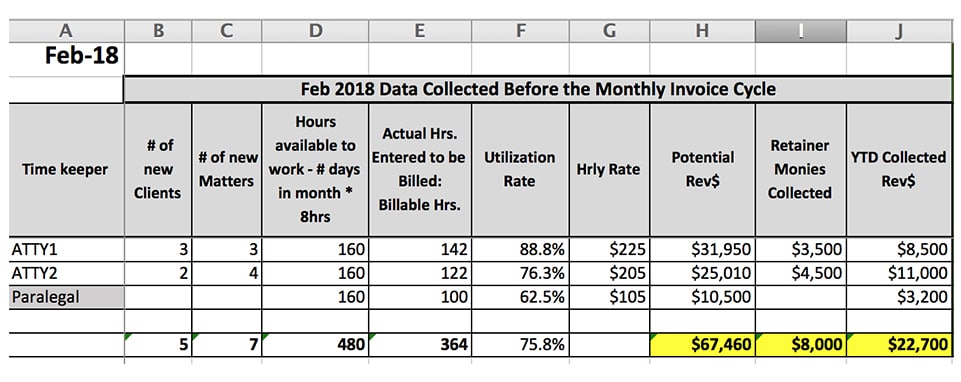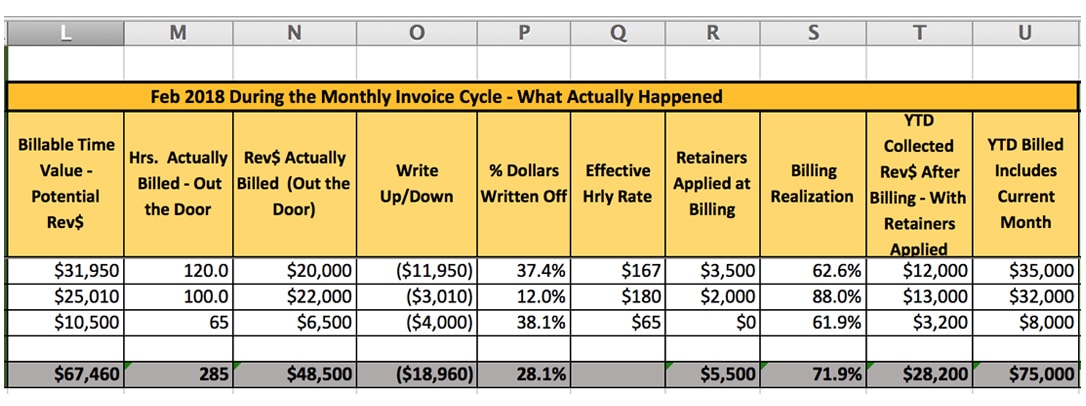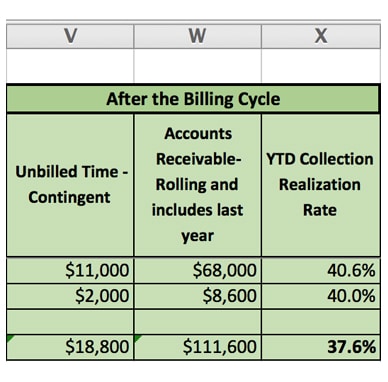While having breakfast with a local lawyer, he said, “I think I need to raise my rates. I am just not making enough money, and raising my rates should make the year more profitable.”
This led me to ask, “Do you know how much additional money you would actually make by raising your rates?” Maybe raising rates was needed; maybe not.
Know the Data Affecting Your Revenue
Knowing where opportunities for more profit may be hiding in your business would be useful information to have at your fingertips. That breakfast conversation evolved into a yearlong project of tracking data that would help identify where the profit in the lawyer’s business was being generated or getting lost.
Whether or not raising his rates was needed, at least the data would be available to support the decision.
Many great articles talk about the importance of collecting data to know your business. But how many of us are really doing that? I hope the following helps you move closer to understanding the importance of collecting data to better understand your profitability.
Build a Spreadsheet to Uncover Opportunities for More Profit
What you choose to collect and track may differ from other firms, but not by much. For this project, we chose to group the data into three areas (which highlights the simplicity of the business of law):
- Before the monthly invoice process
- During the monthly invoice process
- After the monthly invoice process
To start, I recommend you choose a few of the following areas to track, then set up an Excel spreadsheet and add the data on a monthly schedule. Your practice management or accounting software should be holding all this good data. You just need to get it out and into your spreadsheet.
Before the monthly invoice cycle
Basically, the data you’ll pull together here reflects what takes place so that you can actually produce monthly invoices.
- Number of new clients/matters. If you do mainly flat fee cases, break it down by tracking the number of new $1,500 flat fee cases, $2,000 flat fee cases, $2,500 flat fee cases and so on.
- Billable hours captured. Out of the eight to nine hours available in your workday, how well are you utilizing your time?
- Your hourly rate.
- Projected revenue. Base this on billable hours entered using your hourly rate and flat fee cases.
- Retainer funds collected.
Here’s what the spreadsheet might look like:
During the monthly invoice cycle
How many of the hours you captured are actually going on the client’s bill? Track these two items.
- Billing realization rate. Create a column to track hours written off and discounts that occur at the time of invoicing. For example, let’s say you projected revenue based on 130 hours at $200 per hour for $26,000 of revenue. But after your invoices are finalized and sent, the total amount invoiced is only $20,000. What happened to the other $6,000? This is your billing realization rate, and in this case, it is 77 percent.
- Actual hourly rate. To calculate this, divide total dollars billed by the number of hours entered:
Total dollars invoiced/Number of hours entered = Your actual hourly rate
Using the example above, $20,000/130 hours = $154 per hour. See how quickly $200 per hour gets chipped away at?
- Opportunity No. 1. While 77 percent is not such a good realization rate, it focuses you on the need to improve billable hours captured and increase your revenue, making it an opportunity to boost profit.
- Opportunity No. 2. Change that habit of reducing a client’s invoice before it goes out the door. Don’t assume the client will think the invoice is too high. This can always be discussed later.
Warning: Potential lost profit. Are expenses you incurred on behalf of the client getting on the client invoice and properly categorized in your chart of accounts? Do you have a process to review those costs and make sure they are included on invoices?
After the monthly invoice cycle
This is where you track the data surrounding how quickly you get paid and how much money you actually collect.
- Accounts receivable. This number represents invoices you sent that have not been paid. Is the total increasing every month? Do you have enough retainer funds to pay yourself this month? If not, you now have added another task to your month: getting payments.
- Collection realization rate. This represents what was billed out versus what was collected. Look at this data over a longer time, say three to six months, instead of monthly.
- Opportunity No. 3. If your collection rate is below 90 percent, it represents an opportunity to increase profit. You can collect a larger retainer to help manage your accounts receivable. Also, make sure that past-due clients are getting reminders every month. And make it easy for them to pay by sending reminders via email with a link to pay with a credit card.
Know Your Expenses
While focusing on the revenue side of the equation, do not ignore the expense side. You may discover things you had no idea you were paying for. Know your expenses — including your own salary and related items. This will keep you focused on paying yourself first.
Here are a few tips on how to get a better picture of your expenses:
- Create a simple chart of accounts and group your expenses into meaningful buckets. This will make the monthly task of reviewing your expenses less time-consuming.
- If you use credit cards for expenses, reconcile those card accounts monthly. You may be surprised to find that the trial software subscription you signed up for but no longer use is still showing up as a charge every month.
- Reconcile your bank accounts monthly and look at these two reports to review expenses: Monthly Profit and Loss Detail, and Profit and Loss YTD, showing each month so you can see trends in expense accounts.
Uncovering More Profits
A year has passed since we began the data collection project. The attorney now has all the data needed to understand his law firm’s revenue, expenses and profit.
In the end, a profitable law firm happens when you focus on getting and keeping good clients, doing good work and getting paid. Understanding your data allows you to make decisions that enable you to do just that.
Chris and Peggy Gruenke own CPN Legal, a law firm management consulting firm specializing in business operations, technology, law firm bookkeeping services, and trust accounting.
Illustration ©iStockPhoto.com



















